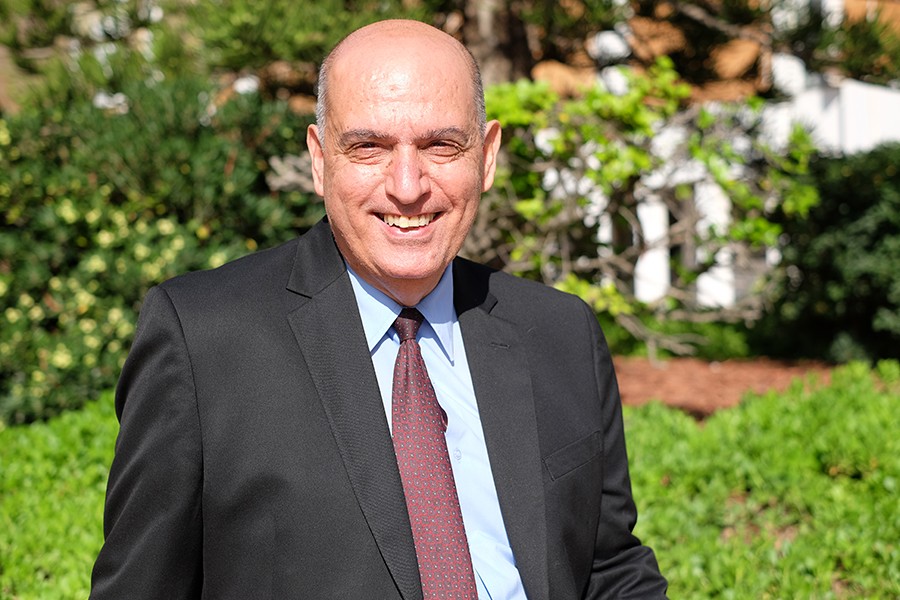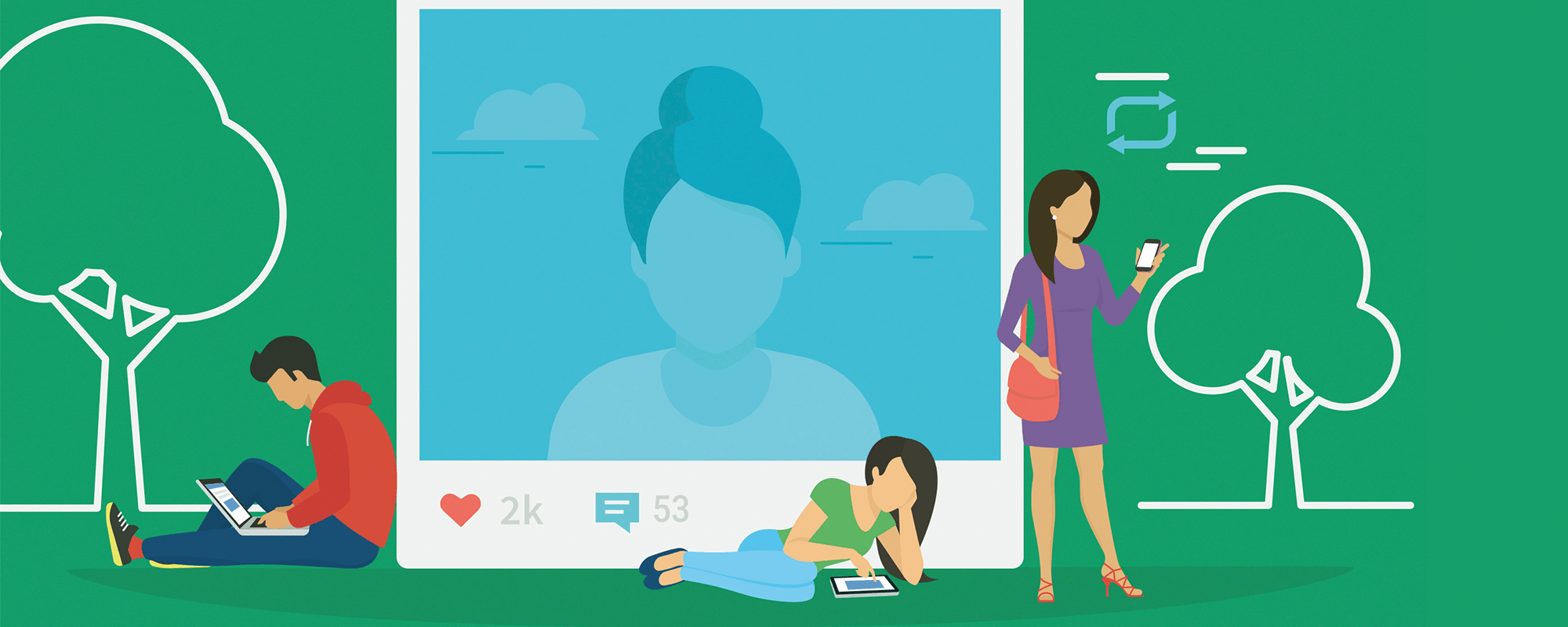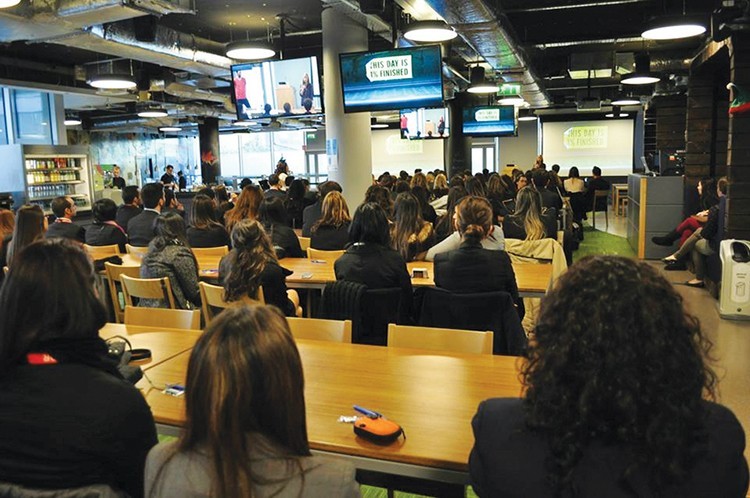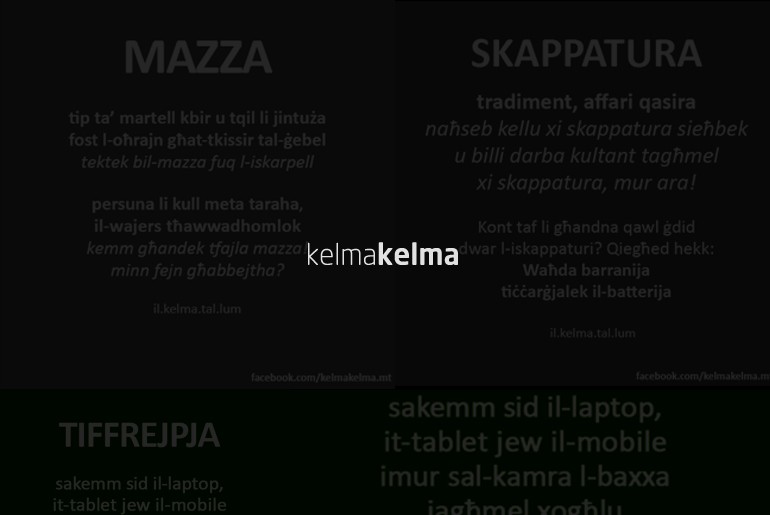A few of us can still remember a world without Facebook, but can we imagine a world where Facebook doesn’t exist anymore? For some, Facebook is an invaluable marketing tool; for others, it is a way to stay connected; and for some, it is the digital boogeyman.
Continue readingSocial networks to support mental health
The COVID-19 situation has taken a toll on people’s wellbeing. The constant flow of information can amplify the stress. Dr Josianne Scerri and Dr Paulann Grech, together with their colleagues and students, carved out a space on social networks where people could practise self-care – and get their facts right. They share their experience here.
Continue readingI <3 potato
Plant-based diets are going mainstream all over the world. Cassi Camilleri sheds light on the local vegan movement and how reducing our meat consumption can benefit us all.
Some label the rise of plant-based living as evidence of ‘trend culture’. And they’re not all wrong. Traditional media bombards us with countless headlines on the topic’s pros and cons. Hard-hitting advocacy films like Cowspiracy and Forks over Knives expose the horrors of the meat industry. Social media influencers share their experiences with the diet, turning it into lifestyle content. And now the market is following suit with vegan and veggie lines and options popping up everywhere.
In 2016, an Ipsos MORI survey for the Vegan Society identified that 3.25% of adults in the UK never eat meat in any form as part of their diet, equating to roughly 540,000 people. Vegan January—commonly known as Veganuary—is growing in popularity. This year, a record-breaking 250,310 people from 190 countries registered for the month-long vegan pledge. And Malta is no exception.
While the official number of people following a plant-based or vegan diet are unavailable, interest is clear. Facebook pages Vegan Malta and Vegan Malta Eats have a combined following of over 16,500 people.

The reasons behind people’s decision to take up veganism are various, however three main motivators keep being cited: health benefits, ethics, and environmental concerns. For vegan business woman Rebecca Camilleri the process was natural and gradual. ‘There was no real intention behind it for me. But after a couple of months of following this diet, I noticed that my energy levels were better than before, and this encouraged me to learn more on how I needed to eat in order to nourish my body with the right nutrients to sustain my active lifestyle.’
Researcher and nutritionist Prof. Suzanne Piscopo (Department of Health, Physical Education, and Consumer Studies, University of Malta) confirms that ‘moving towards a primarily plant-based diet is recommended by organisations such as the World Health Organization and the World Cancer Research Fund, for health and climate change reasons.’
Oxford academic Dr Marco Springmann has attempted to model what a vegan planet would look like, and the results are staggering. According to his calculations, should the world’s population switch to a vegan diet by the year 2050, the global economy would save $1.1 trillion in healthcare costs. We would also save $0.5 trillion in environmental costs, all while slashing greenhouse gas emissions by two-thirds.
Despite all this, veganism has earned itself quite a few enemies along the way. The vitriol thrown back and forth across both camps is shocking. Relatively recently, UK supermarket chain Waitrose came under scrutiny after magazine editor William Sitwell responded to plant-based food article ideas from writer Selene Nelson with a dark counter offer—a series on ‘killing vegans’. Sitwell was since forced to resign. Nelson posited that the hostility stems from ‘a refusal to recognise the suffering of animals. Mocking vegans is easier than listening to them.’

Abigail Higgins from American news and opinion website Vox agrees that guilt plays a role in the hatred aimed towards veganism, but also proposes that the whole movement ‘represents a threat to the status quo, and cultural changes make people anxious.’ This notion is based on research on intergroup threats and attitudes by US researchers Walter G. Stephan and Cookie White Stephan.
It however remains a reality that some of the loudest voices in veganism in the past have been militant. Some have invoked hatred and threats towards those that they perceive not to be sufficiently aggressive in promoting the cause. Piscopo calls for a respectful discussion.
‘Food is not only about sustenance and pleasure, but has symbolic, emotional, and identity value. Take meat for example. Some associate it with masculinity and virility. Others link it to food security as meat was a food which was scarce during their childhood. Some others equate it with conviviality as meat dishes are often consumed during happy family occasions. What is important is that we do not try to impose our beliefs, thoughts, and lifestyle on anyone.’
The way forward is a ‘live and let live’ approach, according to Rebecca Galea. When her journey started she had people ‘staring strangely at [her] food’. Even her family didn’t take her seriously. ‘They were very sceptical as their knowledge on veganism was very limited at the time,’ she remembers. Now, seeing the effect the switch has made to Rebecca’s life, her positive choices are naturally impacting theirs. ‘Everyone is free to make their choice,’ she says. Embodying the philosophy of leading by example, Rebecca has even set up her own business making delicious vegan nut butters, spreads, and more, to great success. ‘The more vegan options are available [in Malta], the more people will be attracted to learning and accepting the benefits of veganism. This might also lead to them following a vegan lifestyle!’
With that, and sharing valid, up-to-date research-based information, as Piscopo suggests, it seems there is no stopping this ‘trend’. And who would want to when veganism can lead to a lower carbon footprint and better health for everyone?
I am online
We’re always warned about what personal details we share on social media. But what does the language people use on platforms like Facebook and Twitter tell us about their wellbeing? Words by Dr Olga Bogolyubova.

Today being an Internet user means being a social media user. The two have become synonymous.
According to the Global Web Index report, there are now over three billion people worldwide using at least one social networking site. The average Internet user has eight social media accounts and is active on at least three platforms. In our contemporary world, most of us spend a significant chunk of our lives online.
This is a modern reality: we access information online, purchase goods and services online, search for jobs online, follow professional interests online, schedule events online, invest in relationships online (some of them purely virtual), and then spend the remaining idle time browsing through our news feeds.
Humans are social creatures, and like other big apes we care about hierarchies and group status. This is reflected in our behaviour on social media, where we actively engage in impression management. We select aspects of our lives to present online in the hopes that they will bring us more benefits, while editing out other parts that could cause negative consequences.
We want to look happy, popular, rich, and successful, or if that doesn’t work, at least try to come across as dramatic or alluring. But in a world where the line between reality and the digital world continues to blur, can we really separate our real-life characteristics from our online persona? Can we effectively hide aspects of our offline identity when online? Are we as good at concealing our true selves as we think we are?
Going deep

A few years back, Dr Michal Kosinski and his team set out to find answers to the above questions. They sought to determine if it would be possible to predict individual characteristics (such as age, gender, sexual orientation, and so on) and personality traits from Facebook Likes.
Over 58,000 people volunteered to take part in the study and provided their Facebook Likes, demographic data, and answers to a set of psychometric measures.
Ethnic origin and gender were predicted from Likes with the highest level of accuracy (95% and 93%, respectively). Prediction of religion, political preferences, and sexual orientation was also good, with 75% to 85% accuracy. However, predicting personality traits turned out to be somewhat more difficult.
In psychology, personality traits are described as characteristic patterns of thoughts, feelings, and behaviours and, by definition, these are latent variables, meaning that they are not directly observable but derived from answers to a set of questions. Even so, Kosinski’s research team did manage to demonstrate significant connections between the study participants’ personality traits and their Facebook Likes, with the trait of Openness showing the best predictive potential.
The study has attracted a lot of attention. Other researchers have since been attempting to predict individual characteristics from various features of social media profiles. At first glance, some of the findings may look strange or even absurd. For instance, in one of the studies aimed at predicting personality traits from profile pictures, it was found that extroverted people are less likely to have profile pictures with nostrils showing. Sounds ridiculous… but it actually makes sense if you think about it. By definition, extroverted individuals are more likely to be mindful of other people’s perceptions of them, more likely to see themselves from another’s point of view. As a result, they’ll post better selfies and profile pictures when compared to introverts, who are more likely to upload casual snapshots as profile pictures.

This observation shows that we are unable to control the little details of our behavior. There as so many minute variables involved that it is impossible for us to keep track of them all. A lot of non-vital and therefore ‘unnecessary’ information slips through, yet it reveals a lot about us. This is also found in language. While we usually have no trouble controlling what we say, it is much harder to control how we speak. The topics of our conversations with friends and strangers are firmly under our control, but our use of pronouns and articles in everyday conversations is not. The style of our language is invisible to us.
Honing in on the invisible
James Pennebaker, Professor of Psychology at the University of Texas, USA, was among the first behavioural scientists to propose computational approaches for the study of these invisible, functional components of language.
Pennebaker’s research demonstrated that it is these ‘stealth’ elements that connect deeply with our psychological makeup and state of mind. His ideas provided a starting point for a lot of current social media-based research. After all, our online presence is still largely text-based and rooted in language, and it is only natural that a lot of social media research is based on linguistic analysis.
Many studies are exploring predictors of how online language is being used. For instance, in a recent Facebook-based study, conducted in collaboration with my colleagues from St. Petersburg State University, Russia, we explored connections between subjective wellbeing (i.e. level of satisfaction with one’s life and positive emotionality) and language used in wall posts.
We were able to show that individuals with lower levels of subjective wellbeing are more likely to use ‘should statements’ in their language. In psychotherapy there is a long-standing tradition to regard ‘should statements’ as a type of irrational thinking associated with distress and mental health problems. It is interesting that we were able to demonstrate the relevance of these classic, pre-Internet theories to the contemporary world.
Identifying markers of mental health problems in online language is another important strand of research. Anxiety and mood disorders are the most common mental health conditions, responsible for a significant burden worldwide. They are also treatable, so early identification is vitally important, and social media may provide a platform for screening, psychoeducation, and connection to treatment (including affordable digital interventions). Research can change these citizens’ lives.
Social media-based research on mental health disorders has consistently found an increased use of first person pronouns (I, me) by people with depression. The finding reflects the painful self-centeredness of the mind in mental illness. Some other findings include observations on language use in post traumatic stress disorder, seasonal affective disorder, and obsessive compulsive disorder, as well as on identification of suicide risk.
Social media can be risky, but is it the monster we are seeing splattered all over mainstream media? Research can help build systems that bring mental health interventions to low resource regions, and it can aid in identification of suicide risk and risk of violence. Ultimately, it can promote healthy living and save lives.
Blockchain: Not just bitcoin
Blockchain is still a big unknown, even for some professionals. Blockchain and the Distributed Ledger Technology (DLT) have been made infamous by Bitcoin, a digital payment and peer-to-peer monetary transaction system that bypasses banks and third party endorsements. But DLT and the Blockchain protocol can be used for other purposes. Blockchain’s greatest strength lies in its decentralised architecture. It allows transactions to be shared openly across independent nodes, verified by encrypted checksums that give each closed block a distinct, indelible signature. All these connected transactions, chained within a common system, make tampering practically impossible. Blockchain is irrevocable, affordable, flexible, and secure.
But what about other applications of these concepts. What if we were to apply such technology to every data exchange? Data and information in the digital age is spearheading the evolution of services and product development, serving a continuum of user demands at all levels and scales, boosting research and innovation applications. Indeed, data is nowadays considered a key ingredient for competitiveness, and this is not about to change anytime soon.

The greatest bottleneck is data sharing. Data production is growing and covering many realms but unfortunately most of it remains locked up in closed databases, enterprises, and institutions. Unofficially it is estimated that the world generates 16 zettabytes of data annually (that’s 16 billion terabyte laptops), but only 1% is analysed. The problem is that data is withheld by data collectors who consider data hoarding to be a right. Where data is released it does not usually flow to users. As a result, we now have institutions running massive centralised databases, often conducting data archaeology, compiling it at local, regional, and global scales. They address the needs of different user groups, but they also impose licensing procedures that ultimately restrain the power of free data flows, establishing unnecessary monopolies.
Blockchain can unleash the full power of data by providing a system for seamless, efficient and secure data transactions. It can lead to so many applications, such as eliminating the need for shipping documents in the transportation of goods, and making the freight and logistics industry more time and cost efficient. Data could be funnelled into artificial intelligence systems to create high performance human-machine interfaces, self-automated robots, cars, and ships. These devices, with information from big data, would be able to learn from their mistakes and autonomously adapt to changing environments. In medicine, large data sets would prove priceless in drug and treatment design, doing away with the constraints of limited sample sizes. The application of such technologies is limited only by our own imagination.
A new digital revolution is looming ahead. Are we ready to be amongst the first to take this leap into the future?
Author: Prof. Aldo Drago
Is new tech killing social interaction?
by Matthew Cesareo from the Gadgets team
Innovation in Business
 Being in the second year of my banking, finance and management studies, innovation in these sectors is a key part of my curriculum. In banking one can easily see developments with the introduction of banking by telephone, internet and mobile. Similarly with management, recent growth has allowed the sector to grow and develop expertise in management of projects, accounting and supply chains.
Being in the second year of my banking, finance and management studies, innovation in these sectors is a key part of my curriculum. In banking one can easily see developments with the introduction of banking by telephone, internet and mobile. Similarly with management, recent growth has allowed the sector to grow and develop expertise in management of projects, accounting and supply chains.
Innovation has exponential potential to foster new solutions, initiatives and jobs. Younger graduates need to create new opportunities. For Malta to improve its competitiveness and attract investment we must turn challenges into opportunities. During Ireland’s EU Presidency, in the first half of 2013, the negotiations led by Dublin saw Malta secure €1.128 billion for the 2014-2020 Multi-Annual Financial Framework. The possibilities for Malta are endless. On top of this framework lies the Horizon 2020 Programme, where countries can compete for over €80 billion set aside for innovation. These funds should be used strategically in Malta to improve existing sectors and to find a way to create new markets and jobs. This growth would build Malta’s competitiveness.
“For Malta to improve its competitiveness and attract investment we must turn challenges into opportunities”
SMEs (small and medium sized enterprises) are being greatly encouraged by the EU since they are seen as a route out of the recent economic crisis. The Horizon 2020 programme gives priority to SMEs.
Malta can win more of these funds by looking at what Horizon 2020 aims to achieve, that is leadership in a world of competitive science and to realise innovations leading to societal change. These could be in the areas of biotechnology, clinical research and green technologies. We need systems that change the way we live and think.
In the global economy, it can be hard to be innovative and entrepreneurial as we have grown accustomed to depending on other countries to do our work. Instead of waiting for new technologies and developments to emerge so that we can replicate them, we should encourage the young generation to open new doors that could lead them to success. Thus, inspiring people to think outside the box and to be creative starts from an early age. This train of thought must be cultivated at the heart of the education system where students start to think about jobs and the future.
Last December, I had the opportunity to see this when I visited Facebook’s Headquarters in Dublin as part of the ASCS study trip. There is considerable scope for further research into virtual platforms linking social media with innovation in business.
Albert Einstein once said ‘Most people see what is, and never see what can be,’ which is exactly why we need to shift the focus on what can be done, rather than what has already been done.









